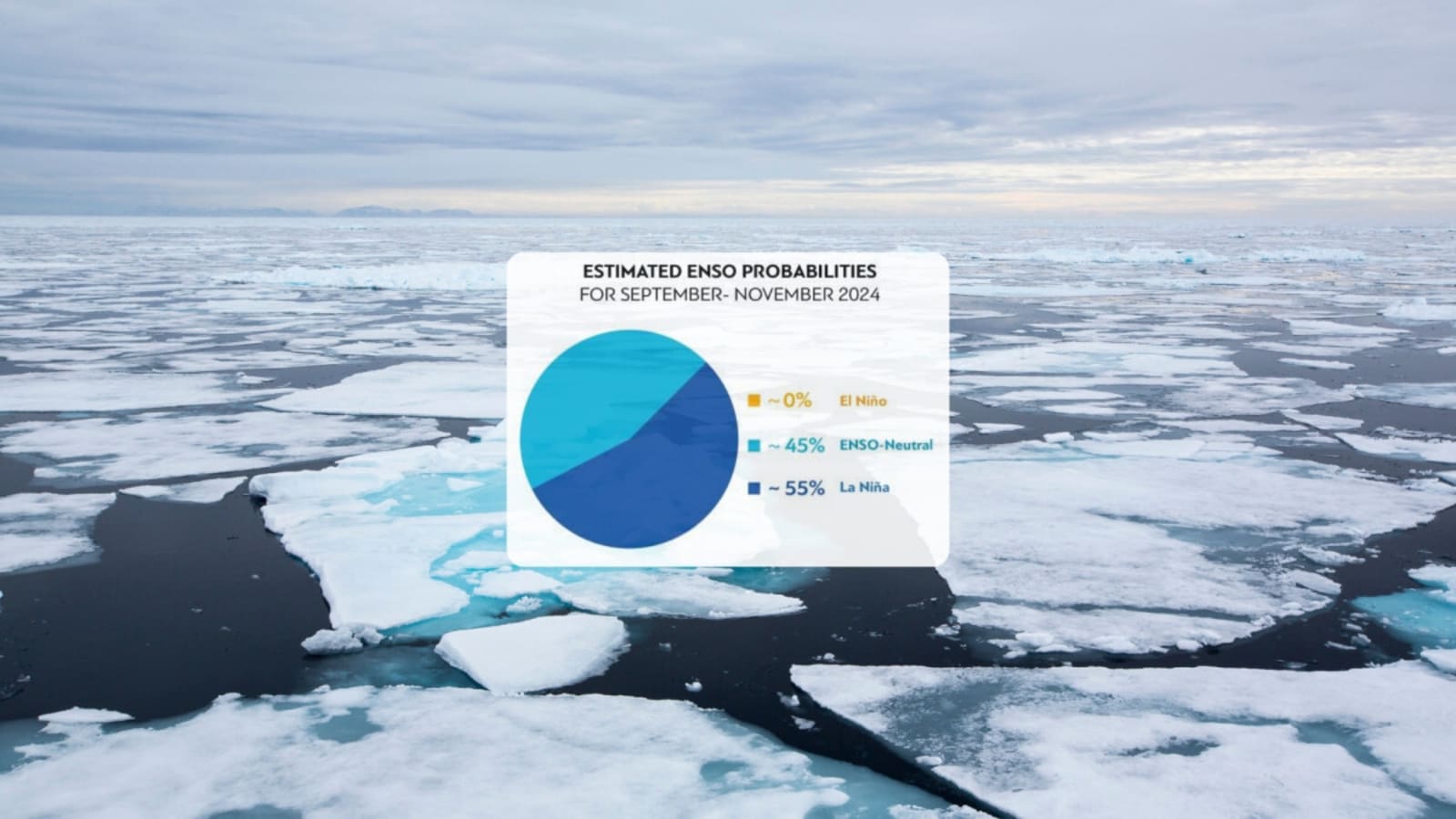
The World Meteorological Organization (WMO) has declared that La Niña has a 60% chance of emerging, "towards the end of this year".
To break it down further, WMO says there's a 55% change of La Niña emerging between September-November 2024, and a 60% change of it emerging in October 2024-February 2025. See below.
Unlike many La Niña forecasts for Winter '24/'25, WMO emphasizes that the effects of human-induced climate change still outweigh the slight cooling of the Pacific Ocean during a La Niña cycle.
WMO Secretary-General Celeste Saulo states, “Since June 2023 we have seen an extended streak of exceptional global land and sea surface temperature. Even if a short-term cooling La Niña event does emerge, it will not change the long-term trajectory of rising global temperatures due to heat-trapping greenhouse gases in the atmosphere."
The organization notes that the past nine years have been the warmest on record despite a multi-year La Niña from 2020 to early 2023. Saulo stresses that widespread extreme weather conditions have prevailed, a symptom of human-induced climate change affecting the Earth.
Some weather experts, like meteorologist Chris Tomer, believe that La Niña will occur during Winter '24/'25, but that it will be a 'weak' or 'lite' version of the weather phenomenon. Tomer indicates that this could cause variances in how a typical La Niña affects North America's weather, but WMO believes that Winter '24/'25 could be slightly more predictable.
"Predictions for large-scale rainfall patterns partially align with the typical impacts observed during the early stage of La Niña conditions, including above-normal rainfall in far northern South America, Central America, the Caribbean, northern Greater Horn of Africa and the Sahel, parts of southeast Asia and central Maritime Continent," WMO writes.
As a global organization, WMO doesn't drill down into the weather of North America's ski resorts, but their prediction of 'above-normal rainfall' for regions that typically experience more moisture during La Niña, is a good sign for our friends in the Pacific Northwest and Northern Rockies. They're certainly keeping their fingers crossed that La Niña will lead to a long, cold, and deep ski season.
WMO has identified the following key messages to take away from their September 2024 update:
- La Niña has relative short-term cooling impact on global climate
- It generally has opposite impacts to El Niño
- Longer-term global warming continues
- “Neutral” El Niño-Southern Oscillation conditions currently prevail
- Early warnings and seasonal predictions help climate adaptation
Be the first to read breaking ski news with POWDER. Subscribe to our newsletter and stay connected with the latest happenings in the world of skiing. From ski resort news to profiles of the world’s best skiers, we are committed to keeping you informed.
Submit your best clips for a chance to be featured on POWDER. Tune in and watch handpicked, high-quality ski videos streaming all day long on POWDER TV, and subscribe to our YouTube channel.
More must-reads:
- Sabres, Bowen Byram avoid arbitration with new two-year deal
- NHL's 2025-26 opening night slate is a showcase opportunity for the league
- The 'Most recent cycle by MLB franchise' quiz
Breaking News
Trending News
Customize Your Newsletter
 +
+
Get the latest news and rumors, customized to your favorite sports and teams. Emailed daily. Always free!








